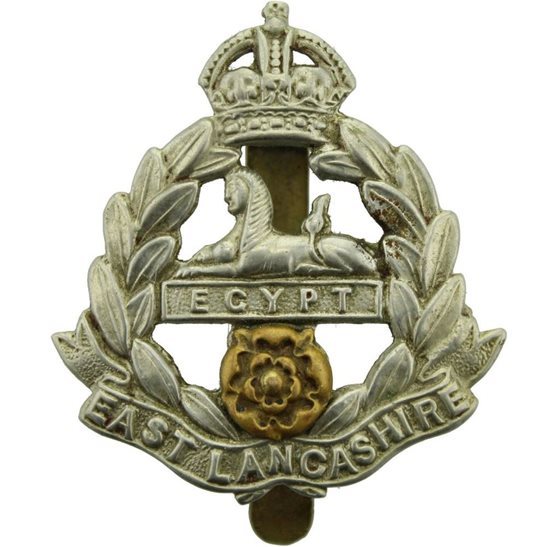Personal Details
Born: In Whitchurch, Shropshire on the 31 December 1899.
Family: The second child of James and Florence Gillespie. At the time of his birth, the family were living at 144 Wrexham Road, Whitchurch, Shropshire. Ten years later they had moved to 15 Orphan Street, Off Melville Place, Liverpool. On the 29 September 1927 he married Geraldine Miller in New York, USA and together they had 3 children – Stanley, Bruce and Ronald.
Civilian Occupation: He was employed as a clerk before enlisting in January 1918. In 1940 he was employed as a school janitor.
Other Information: In the 1930 US Census it states he arrived in America in 1922 but he was still in the army at this time.
Military Details
Regiment: East Lancashire Regiment (formerly Manchester Regiment). When he re-enlisted in 1920 he served in the King’s Liverpool Regiment
Rank: Private
Service Number: 33884, previously 57582
Date of Enlistment: 14 January 1918
Date of Discharge: 31 March 1920
Reason for Discharge: Demobilisation
Other Information: He joined the Manchester Regiment and was transferred to the East Lancashire Reg. After the war he re-enlisted on 23 July 1920 and served for 3 years with the King’s Liverpool Reg.
Archibald was awarded the Campaign Medals (British War Medal, and Victory Medal).

The British War Medal (also known as 'Squeak') was a silver or bronze medal awarded to officers and men of the British and Imperial Forces who either entered a theatre of war or entered service overseas between 5th August 1914 and 11th November 1918 inclusive. This was later extended to services in Russia, Siberia and some other areas in 1919 and 1920. Approximately 6.5 million British War Medals were issued. Approximately 6.4 million of these were the silver versions of this medal. Around 110,000 of a bronze version were issued mainly to Chinese, Maltese and Indian Labour Corps. The front (obv or obverse) of the medal depicts the head of George V. The recipient's service number, rank, name and unit was impressed on the rim.
The Allied Victory Medal (also known as 'Wilfred') was issued by each of the allies. It was decided that each of the allies should each issue their own bronze victory medal with a similar design, similar equivalent wording and identical ribbon. The British medal was designed by W. McMillan. The front depicts a winged classical figure representing victory. Approximately 5.7 million victory medals were issued. Interestingly, eligibility for this medal was more restrictive and not everyone who received the British War Medal ('Squeak') also received the Victory Medal ('Wilfred'). However, in general, all recipients of 'Wilfred' also received 'Squeak' and all recipients of The 1914 Star or The 1914/1915 Star (also known as 'Pip') also received both 'Squeak' and 'Wilfred'. The recipient's service number, rank, name and unit was impressed on the rim.

